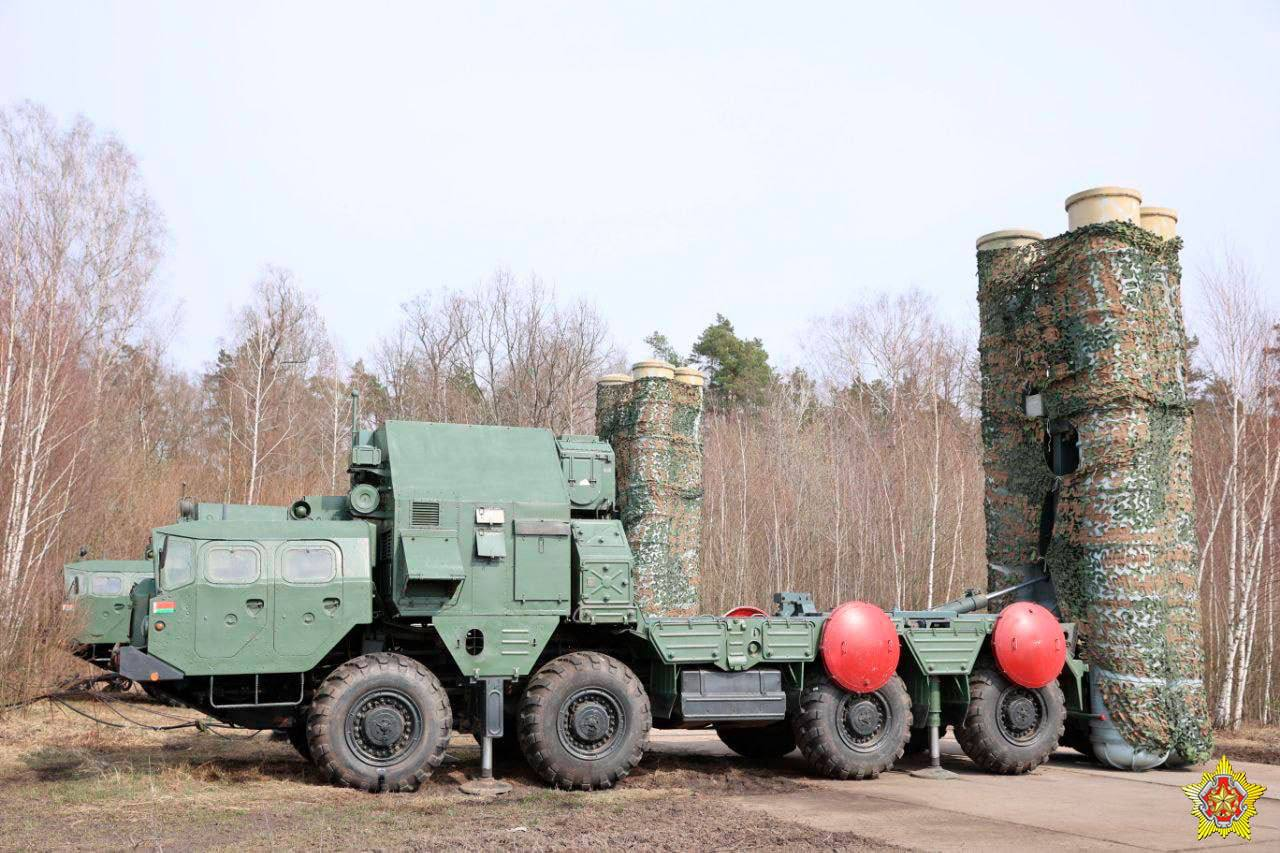Weapons That Are Not Easy to Detect
 The situation has not changed
The situation has not changed

The Belarusian regime continues to use external and internal threats to justify further militarisation of the country and increase repression. However, Minsk also aims to create the impression that it has the resources and weapons to avert these threats.
On March 22nd, Defence Minister Viktar Khrenin inaugurated a new anti-aircraft missile regiment in Luninets, close to the border with Ukraine, which (based on comments in December 2022) may be armed with S-400 air defence systems, which Minsk claims to have received from Moscow. However, as per photos published by the Belarusian Ministry of Defence it can be assumed that the regiment is equipped with the S-300PS air defence system, most probably transferred from another air defence unit of the Armed Forces of the Republic of Belarus.
With the exception of exercises in July 2022 as part of a joint “training and combat centre”, the presence of S-400 air defence systems in the Belarusian arsenal has not been confirmed. A regimental deployment would consist of 2 divisions with eight launchers in each. It would be somewhat problematic for warring Russia to supply Belarus with such weapons. The Economic Times reports supply problems with S-400 units for the Indian armed forces based on a contract signed in 2018. Deliveries should have been completed in 2024, but they have been postponed indefinitely due to the war.
Follow us on Twitter
Meanwhile, Lukashenka, employing one of his favourite forms of military blackmail, claims that there are no problems obtaining Russian weapons and that this also applies to ammunition with “real uranium”. This statement responded to the UK decision to supply Ukraine with depleted uranium shells for use in British tanks. However, such munitions are neither nuclear nor chemical weapons nor regulated.
Meanwhile, Moscow accused Britain of nuclear escalation and threatened the “rapid deployment” of tactical nuclear weapons to Belarusian territory. Putin announced that a storage facility for such weapons would be complete by July 1st; however, he also (vaguely) claimed that Russia had not transferred tactical nuclear weapons to Belarus but does “the same things that they [the United States] have been doing for decades. They have [them] in certain countries and train carriers and train their crews.”
At the beginning of the week, Lukashenka held a meeting with the senior regime members at which external and internal threats were used to justify further militarisation of the country and the intensification of repression. The meeting was officially routine, but most were devoted to the recent events in Hrodna.
According to the regime, KGB special forces eliminated a foreign terrorist. The ByPOL organisation of former security forces members stated that the “terrorist” shown in KGB operational footage is a KGB employee from a regional unit. By the end of the week, Valery Sakhashchyk’s team published their investigation into the events in Hrodna, alleging a Russian connection which has nothing to do with the Belarusian opposition.
Subscribe to our newsletter




Situation in Belarus
Constitutional referendum: main consequences


 Video
Video
How to count the political prisoners: are the new criteria needed?


 Video
Video
Paternalism In Decline, Belarusian Euroscepticism, And The Influence Of Russia


 Video
Video












